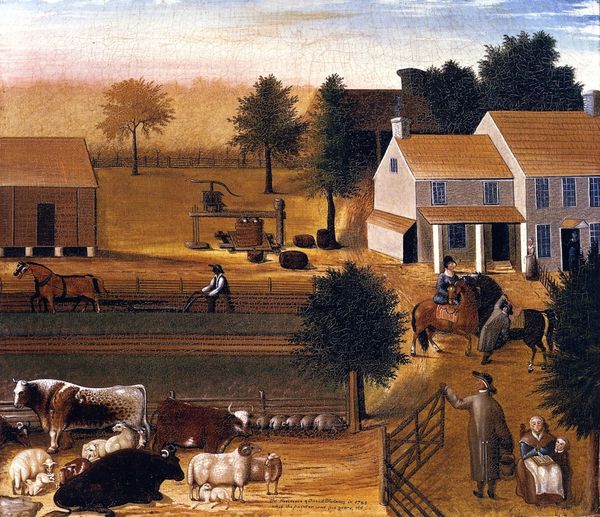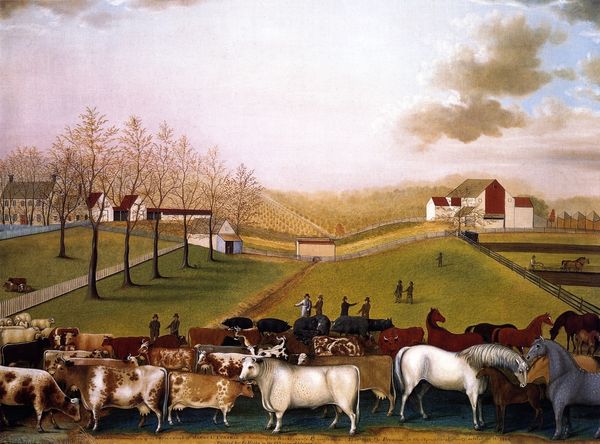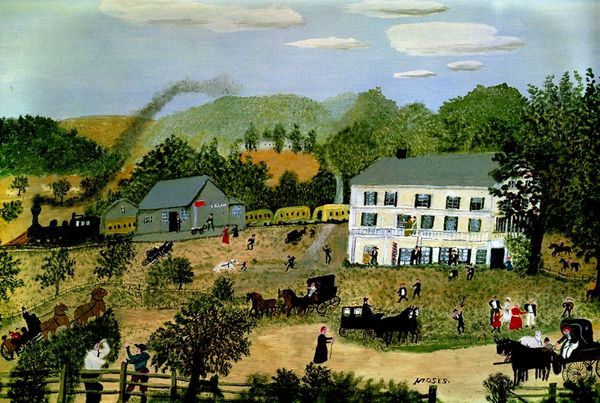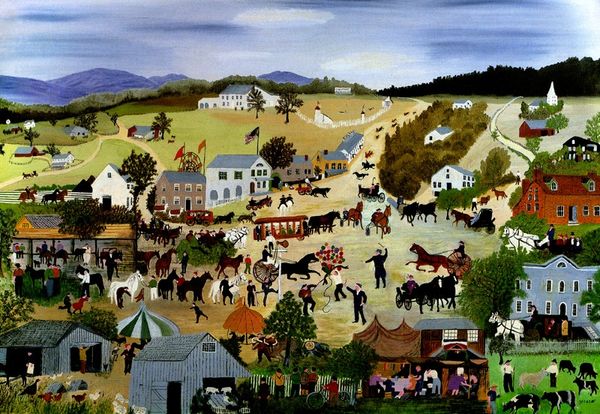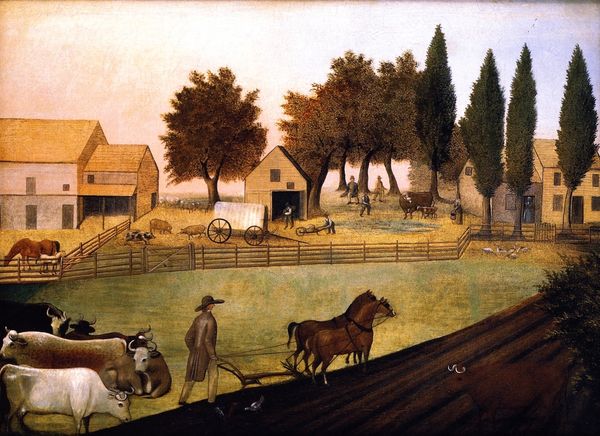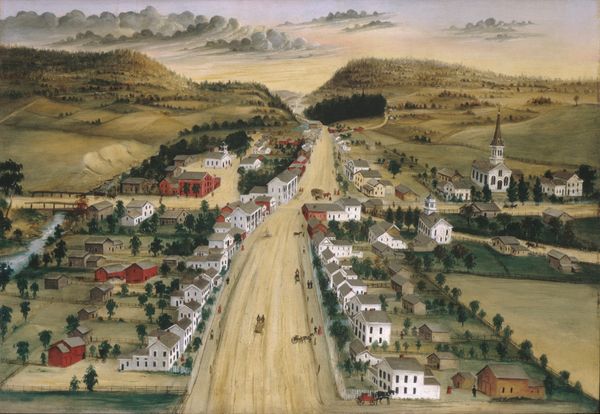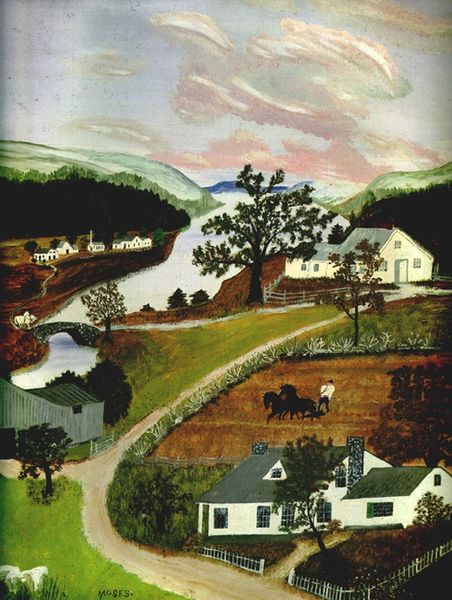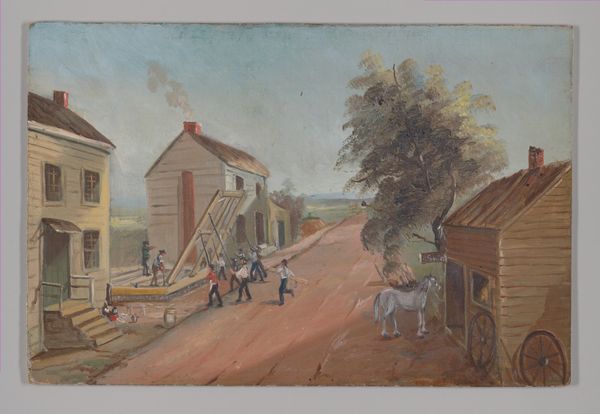
painting, oil-paint, acrylic-paint, wood
#
portrait
#
sky
#
urban landscape
#
animal
#
rural-area
#
painting
#
oil-paint
#
landscape
#
house
#
acrylic-paint
#
figuration
#
folk-art
#
hudson-river-school
#
wood
#
genre-painting
#
history-painting
#
miniature
#
realism
Copyright: Public domain
Edward Hicks painted "The Residence of David Twining" around 1787 in America, in what might now be called the folk art style. The picture offers a window into the social and economic life of rural Pennsylvania, where the artist himself lived. The scene depicts a prosperous farm, with livestock, crops, and multiple buildings. It suggests a community where everyone has a defined role, from plowing to keeping house. Hicks was a Quaker minister, and this image evokes the values of hard work, self-sufficiency, and community that were central to Quaker life. The painting also reflects the institutional structures of its time. Land ownership was a key to social status and political power. Art history helps us understand how art, far from being separate from society, is deeply intertwined with social, cultural, and economic realities. Primary documents such as diaries and tax records help to flesh out our knowledge of the social history that made such an image possible.
Comments
No comments
Be the first to comment and join the conversation on the ultimate creative platform.
